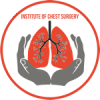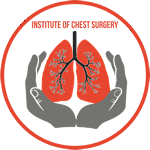Tracheal stenosis is a medical condition that affects the trachea, commonly known as the windpipe. The trachea plays a vital role in facilitating the passage of air between the lungs and the external environment, enabling efficient breathing. However, when the trachea becomes narrowed or constricted due to various factors, it can lead to tracheal stenosis, causing breathing difficulties and other respiratory issues. In this article, we will explore the causes, symptoms, diagnosis, and available treatment options for tracheal stenosis while answering the question: “Can tracheal stenosis be cured?”
Understanding Tracheal Stenosis
Tracheal stenosis occurs when the trachea narrows, limiting the airflow to and from the lungs. It can be categorized as either acquired or congenital, depending on its origin.
Acquired Tracheal Stenosis
Acquired tracheal stenosis is the most common form and usually develops as a result of external factors or medical interventions. The leading causes include prolonged intubation, trauma to the trachea, inflammation due to prolonged respiratory infections, and certain medical procedures involving the trachea.
Congenital Tracheal Stenosis
Congenital tracheal stenosis is a rare condition that is present at birth. It is caused by abnormal development of the trachea during fetal growth. Although less common, congenital tracheal stenosis can present significant challenges for affected individuals.
Symptoms of Tracheal Stenosis
The symptoms of tracheal stenosis can vary depending on the severity and location of the narrowing in the trachea. Common signs and symptoms include:
- Shortness of Breath: Difficulty breathing, especially during physical activity, is a prevalent symptom of tracheal stenosis. As the trachea narrows, it restricts the passage of air, leading to a sensation of breathlessness.
- Wheezing: A high-pitched whistling sound during breathing, known as wheezing, may occur due to turbulent airflow through the narrowed trachea.
- Chronic Cough: Tracheal stenosis can cause a persistent cough, as the body attempts to clear the airways of any obstructions.
- Frequent Respiratory Infections: Narrowed airways can make individuals more susceptible to respiratory infections, leading to recurrent episodes of pneumonia or bronchitis.
- Stridor: Stridor is a harsh, vibrating noise heard during inhalation and exhalation, resulting from the narrowed tracheal passage.
Diagnosis of Tracheal Stenosis
If a patient presents with symptoms suggestive of tracheal stenosis, a thorough evaluation is essential to establish an accurate diagnosis. The diagnostic process may involve the following:
- Medical History and Physical Examination: The doctor will inquire about the patient’s symptoms and medical history, followed by a physical examination, including listening to the lungs and assessing breathing patterns.
- Imaging Studies: X-rays, computed tomography (CT) scans, and magnetic resonance imaging (MRI) are commonly used to visualize the trachea and detect any narrowing or abnormalities.
- Bronchoscopy: A bronchoscope, a thin, flexible tube with a camera, is inserted through the nose or mouth to directly visualize the trachea and obtain tissue samples for biopsy.
- Pulmonary Function Tests (PFTs): PFTs are conducted to assess lung function and identify any breathing abnormalities associated with tracheal stenosis.
Can Tracheal Stenosis Be Cured? Treatment Options
The treatment approach for tracheal stenosis depends on several factors, including the severity of the condition, the cause, and the individual’s overall health. In some cases, tracheal stenosis can be cured or significantly improved with appropriate interventions.
- Medical Management: For mild cases of tracheal stenosis, especially those caused by inflammation or infections, medical management may be sufficient. This can involve the use of bronchodilators, corticosteroids, and antibiotics to reduce inflammation, open the airways, and treat any underlying infections.
- Endoscopic Procedures: Endoscopic techniques, such as balloon dilation and laser therapy, can be employed to widen the narrowed trachea. During balloon dilation, a small balloon is inflated at the site of the stenosis to stretch the tracheal walls. Laser therapy, on the other hand, uses a laser beam to remove the scar tissue or tumor causing the constriction.
- Tracheal Stents: In cases of severe or recurrent tracheal stenosis, the insertion of tracheal stents may be considered. Stents are small, expandable tubes that are placed in the trachea to keep it open and maintain adequate airflow.
- Surgery: Surgical intervention may be necessary for complex or extensive tracheal stenosis. Procedures like tracheal resection and reconstruction involve removing the narrowed portion of the trachea and reconnecting the healthy ends.
- Lung Transplant: In rare and severe cases where other treatments are not effective, lung transplant surgery may be considered for patients with end-stage tracheal stenosis.
Conclusion
Tracheal stenosis can significantly impact an individual’s respiratory function and quality of life. Early diagnosis and appropriate treatment are crucial in managing the condition effectively. While milder cases can be successfully managed with medical treatments or endoscopic procedures, more severe stenosis may require surgical interventions or even lung transplant in extreme cases. If you or someone you know experiences symptoms suggestive of tracheal stenosis, seeking immediate medical attention and consulting with specialists, like Dr. Mohan Venkatesh Pulle, can make a substantial difference in achieving the best possible outcomes.
While some cases of tracheal stenosis can be cured or significantly improved, it is essential to remember that each patient’s situation is unique. As medical research and technology continue to advance, the outlook for individuals with tracheal stenosis may improve, offering hope for a brighter and healthier future.







